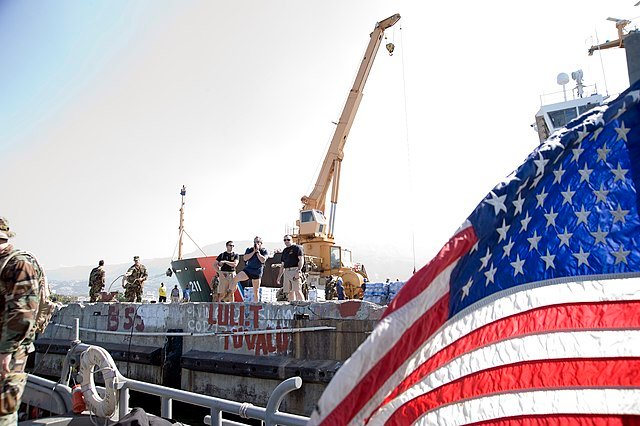American ports grew eerily quiet in May as ocean imports from China plummeted under President Trump’s 145% tariffs, leaving docks half-empty and retailers scrambling. The sharp drop, the steepest since the pandemic, has sparked fears of empty shelves and soaring prices, hitting families and small businesses hardest. While a recent U.S.-China trade truce eases tariffs to 30%, the damage lingers, raising questions about the tariffs’ cost to everyday Americans and whether they’re more about politics than prosperity.
Data from Descartes Datamyne paints a grim picture: U.S. seaborne imports from China fell 28.5% year-over-year in May, with West Coast ports like Long Beach and Los Angeles down 20.9% and 8.5%, respectively. East Coast hubs, including New York and New Jersey, saw a 15.3% dip, while Tacoma, Washington, cratered 39.4%. The tariffs, announced April 2 and effective April 10, doubled costs for goods like furniture, clothing, and toys, prompting retailers like Walmart and Home Depot to cancel orders. “We’re seeing bare docks,” said Gene Seroka, Port of Los Angeles director. “Cargo’s down 35%—it’s like the supply chain hit a wall.” Importers front-loaded goods before May, but stockpiles are thinning, with JPMorgan predicting a 75–80% import drop from China in 2025’s second half.
The tariffs, part of Trump’s “Liberation Day” push to boost U.S. manufacturing, aimed to curb a $440 billion trade deficit with China. A 20% fentanyl-related duty added to the 125% reciprocal tariff, totaling 145%, crushed trade, with China retaliating at 125% on U.S. goods like soybeans. Small businesses suffered most. Kristin Bear, a lingerie shop owner, said, “I can’t afford to import at these rates—I might close.” Consumers like Arlington mom Clara Vong worry about costs: “Kids’ clothes are pricier already.” A June 2025 poll shows 60% back tariffs to protect jobs, but 70% fear price hikes. Small port vendors, like a Long Beach taco stand, saw 20% sales drops as cargo slowed.
The May 12 trade deal, brokered in Switzerland, slashed U.S. tariffs to 30% (plus 25% from Trump’s first term, totaling 55%) and China’s to 10% for 90 days, spurring a rush to ship goods. But Seroka warns 30% tariffs still sting, and retailers hesitate to restock heavily. “It’s a relief, but prices won’t drop overnight,” said Bonnie Ross, a New York clothing importer. Analysts like Torsten Slok of Apollo Global Management warn of a 90% recession risk by summer if trade doesn’t stabilize. Small retailers, facing 15% tariff-driven cost hikes, delay expansions, per JLL data. Critics argue the tariffs, tied to Trump’s campaign rhetoric, prioritize optics over economic sense, risking $500 million in losses if imports don’t rebound.
The import plunge threatens America’s $15 billion retail sector, with 40% of furniture and 60% of toys from China. Small manufacturers, reliant on Chinese parts, face delays, while port workers fear layoffs—trucking firms cut 10% of jobs in May. The truce may boost freight rates as ships return, but capacity lags after 90 blank sailings in April-May, per Sea-Intelligence. If talks falter, tariffs could spike again, deepening shortages. The deal’s fentanyl focus, adding a 20% duty, draws skepticism, as enforcement gaps persist.
As ports gear up for a cautious rebound, businesses eye alternatives like Vietnam, but shifting supply chains takes years. “We’re stuck playing catch-up,” Ross said. The truce offers hope, but with 30% tariffs still looming, Americans brace for a pricier summer, wondering if the trade war’s scars will heal or deepen.web:0,1,4,6,7,9,10,11,12,13,14,15,16,18,19,23post:1,2,3,4,5,6,7




















